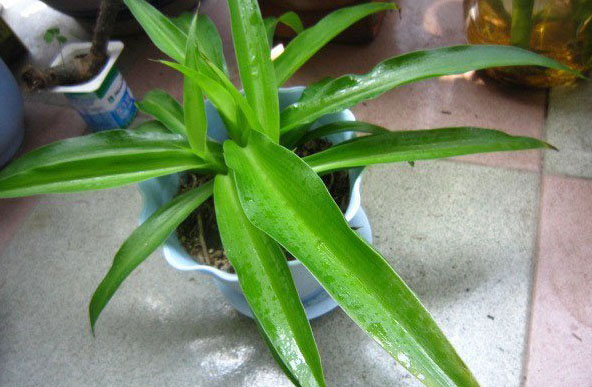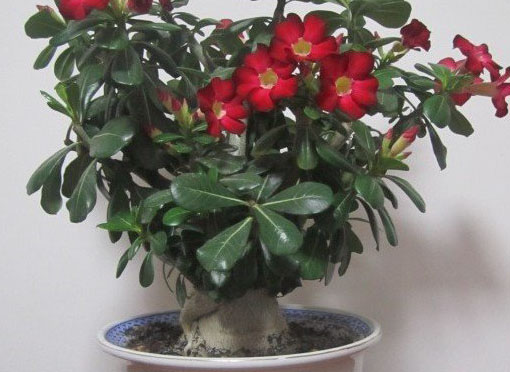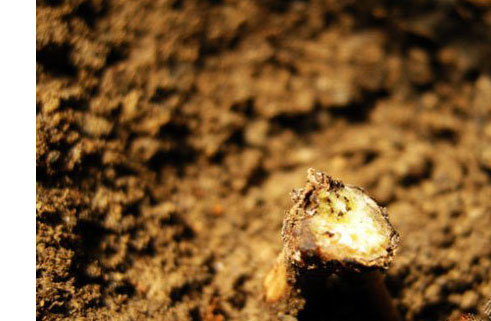What is the reason for the blackening of the leaf tip of Cymbidium
Cymbidium is a very popular foliage plant, many flower friends have found a sense of achievement in growing flowers, but they will also encounter the situation of blackening the leaf tip of the orchid, although it will not affect the growth of the orchid, but it will greatly affect its beauty. so how can we prevent the leaf tip of the orchid from blackening?
Generally speaking, the blackening of the leaf tip of the hanging orchid is caused by too much watering. although the hanging orchid is also fine with watering, it is precisely because of this that many flower friends do not have any worries about watering the hanging orchid, which is caused by long-term stagnant water. the leaf tip of the hanging orchid is black and withered, of course, some flower friends said, I watered very frequently why my hanging orchid leaf tip did not blacken? Watering and basin soil permeability are corresponding, if the basin soil is not breathable enough, watering more, naturally stagnant water, if the basin soil permeability is good, no matter how much watering is not a problem.

Another reason for the blackening of the leaf tip is that if the orchid is close to the wall or something else, it will also cause the leaf tip to blacken, so the place to be placed should be as spacious as possible.
Conclusion: watering should be moderate (do not keep watering and spraying every day, but according to the actual situation), and the placement should be spacious and bright.
Hanging orchid leaf tip blackening is a very popular foliage plant, many flower friends have found a sense of achievement in growing flowers, but they will also encounter the situation that the leaf tip of the hanging orchid is blackened, although it will not affect the growth of the hanging orchid, but it will greatly affect its beauty. so how can we prevent the leaf tip of the hanging orchid from blackening? Generally speaking, the blackening of the leaf tip of the hanging orchid is caused by excessive watering. Although the hanging orchid is fine for watering a little more, it is precisely because of this that many flower friends do not have any worries about watering the hanging orchid, which is caused by long-term stagnant water. the leaf tip of the hanging orchid blackened and withered, of course, some flower friends said, I watered very frequently why my hanging orchid leaf tip did not blacken? Watering and basin soil permeability are corresponding, if the basin soil is not breathable enough, watering more, naturally stagnant water, if the basin soil permeability is good, no matter how much watering is not a problem. Another reason for the blackening of the leaf tip of the hanging orchid is that if the hanging orchid is close to the wall or other things, it will also cause the leaf tip to blacken, so the place to be placed should be as spacious as possible. Conclusion: watering should be moderate (do not keep watering and spraying every day, but according to the actual situation), and the placement should be spacious and bright. The reason and treatment of the blackening of the leaf tip of the hanging orchid is a very popular foliage plant. Many flower friends have found a sense of achievement in growing flowers on the hanging orchid, but they will also encounter the situation of blackening the leaf tip of the hanging orchid, although it will not affect the growth of the hanging orchid. However, it has a great impact on beauty, so how can we prevent the leaf tip of the hanging orchid from blackening? 1. Reason: the blackening of the leaf tip of the hanging orchid is caused by a variety of reasons, probably due to poor water permeability in the basin, stagnant water in the basin soil and rotting of nutritious fibrous roots. Because the potted soil is too sticky or too heavy, or watering too frequently, the vegetative fibrous roots of Cymbidium are rotten, resulting in a great decrease in the ability of the roots to absorb water, so that the tip of the leaf tip of Cymbidium turns black. Another reason is that the basin has not been changed for a long time, causing the root system to grow directly to the basin wall. In the environment of high temperature, high drought or cold weather, it is easy to cause root tip atrophy and necrosis, causing it to lose its due absorption function, resulting in leaf tip drying and atrophy. two。 Treatment method: you can remove the plant from the flowerpot, shake off part of the persistent soil, cut off the rotten roots, replace it with clean wet sand planting, keep the sand moist, but spray more water, wait for the white and tender whisker root to be born, and then replace the fertile culture soil for planting. If the rotten root is not serious, after cutting off the rotten root, the wound can be coated with plant ash, or sulfur powder, and then directly planted with culture soil. In view of another reason, the treatment method can first pour the plant out of the flowerpot, cut off the dead leaves, then remove part of the old soil, and also cut off the aging or necrotic roots, and plant them with fresh culture soil. keep it in a cool, moist and semi-shady environment, pay attention to more water spraying and less watering, and the newly drawn young leaves of the plant can resume normal management.
- Prev

The reason why desert roses lose their leaves
Desert plants are succulent plants, good sunshine is conducive to growth and flowering, even in the winter dormant period, still need plenty of sunshine to survive the winter, the environment to avoid moisture, even in the growing period, water can not be too much, especially during the dormant period, before each watering
- Next

Treatment of Fusarium wilt of Clematis clematis
Clematis seldom has diseases and insect pests, and the most common disease is clematis wilt. The probability of clematis wilt in foreign books is 5-10%, and rainy Fusarium wilt will be more serious in spring. Clematis wilt is mostly caused by moist air and molds invade branches. Often, after a spring rain
Related
- Fuxing push coffee new agricultural production and marketing class: lack of small-scale processing plants
- Jujube rice field leisure farm deep ploughing Yilan for five years to create a space for organic food and play
- Nongyu Farm-A trial of organic papaya for brave women with advanced technology
- Four points for attention in the prevention and control of diseases and insect pests of edible fungi
- How to add nutrient solution to Edible Fungi
- Is there any good way to control edible fungus mites?
- Open Inoculation Technology of Edible Fungi
- Is there any clever way to use fertilizer for edible fungus in winter?
- What agents are used to kill the pathogens of edible fungi in the mushroom shed?
- Rapid drying of Edible Fungi

